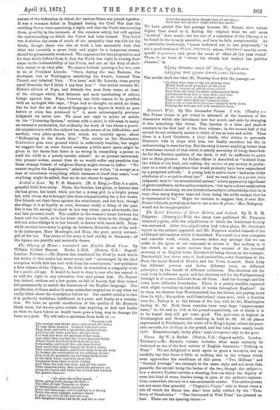The Local Taxation of Great Britain and Ireland. By R.
B. H. Palgrave. (Murray.)—With the essay here published Mr. Palgrave obtained a prize, with the adjudication of which the Statistical Society was entrusted. After this adjudication had taken place, Mr. Goachen's report on the subject appeared, and Mr. Palgrave availed himself of the additional information which it furnished. The result is a very complete and valuable work, which, however, defies any attempt that we can make in the space at our command to review it. But nothing in it has struck us as more curious than the account of the internal economy of an English town, Macclesfield being chosen as the example. Macclesfield has three sets of local authorities,—the Guardians of the Poor, the Local Board of Health, and the Town Council. Each body has different powers, and levies different rates, on different principles, by the hands of different collectors. The electoral roll for each body is different again, and the electoral roll for the Parliamentary borough is of course different from all three. And the borough and the town have different boundaries. There is a pretty muddle, repeated with alight variations in hundreds of towns throughout England ! As to rates, we observe that Westmoreland has the lowest, not paying more than Is. ; Shropshire and Cumberland come next, with a fraction over 2s.; Surrey is at the bottom of the list, with 4e. bd., Huntingdon having 4s. 2d. Both these counties have very largo "improvement rates," la. Sd. and Is. 10d. in the pound respectively, out of which it is to be hoped they will get some good. The poor-rate is highest in Southampton and Monmouth, reaching in both 2a. 2d. Of all places represented in Parliament, the worst off is King's Lynn, where the poor- rate exceeds jive shillings in the pound, and the total rates nearly reach eight. Knaresborough, lucky place ! pays sevenpence only to the poor.


































 Previous page
Previous page